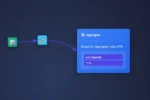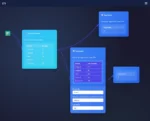
by tyler garrett | Jun 1, 2025 | Data Management
In today’s data-driven world, organizations are increasingly leveraging data analytics to drive critical decisions, streamline operations, and maintain competitive advantages. The ability to accurately link records across datasets is foundational for a robust analytics strategy. Yet, the often sensitive and private nature of data creates a unique challenge for businesses. How can companies consolidate and analyze records without sacrificing the privacy and confidentiality of customers, vendors, and internal operations? Enter privacy-preserving record linkage—a suite of innovative, secure, and compliant techniques that effectively address privacy concerns while enabling data insights. As experts in data analytics and innovation, our team regularly empowers organizations to implement novel, secure data linkage strategies that align with privacy laws and ethical best practices. In this article, we’ll unpack key privacy-preserving record linkage methods and explain how integrating these techniques drive success in sophisticated analytics scenarios.
Understanding Record Linkage: The Essential Building Block
Record linkage, often referred to as entity resolution or data linkage, is the process of connecting related data points across multiple, disparate datasets. When executed appropriately, record linkage produces powerful, actionable insights by matching records representing the same real-world entities—such as individuals, companies, or transactions—across different data sources. This capability is foundational in shaping analytics use cases like predictive modeling, customer segmentation, personalized marketing, and outcomes assessment.
However, the conventional approach to record linkage involves sharing personally identifiable information (PII) across organizational or system boundaries, posing significant data privacy risks. Companies in highly regulated industries, such as healthcare, finance, and governmental institutions, have strict compliance requirements for data privacy outlined by regulations like GDPR and HIPAA.
Given this evolving regulatory backdrop, many forward-thinking organizations seek innovative ways to continue engaging in potent analytics practices while ensuring absolute data privacy. Here, human-centered design in data analytics adds value, allowing approaches that protect individual anonymity and client confidence simultaneously.
The Importance of Privacy-Preserving Techniques in Record Linkage
Traditional record linkage methods expose organizations to significant privacy and security vulnerabilities. Transferring sensitive data between enterprise boundaries risks data breaches, exposes businesses to regulatory penalties, and damages customer trust. Additionally, the fear of violating customer privacy becomes a significant barrier in leveraging analytics fully.
Adopting privacy-preserving approaches enables enterprises to securely and confidently leverage and share analytical insights derived from record linkage. Techniques such as hashing, secure multi-party computation (SMC), differential privacy, and encryption-based options ensure that datasets remain secure, anonymized, and uncompromised. At the same time, companies gain access to valuable analytics and decision-making fueling competitive advantages and comprehensive insights.
Integrating privacy-preserving data techniques aligns perfectly with scalable cloud solutions like Microsoft Azure. Organizations leveraging services such as Microsoft Azure gain infrastructure geared specifically toward security, scalability, and resilience. As experts in secure analytics integrations, our experienced Azure consulting services team guides clients through deploying platforms that power safe analytics scenarios, helping organizations maintain compliance without sacrificing performance.
Techniques for Privacy-Preserving Record Linkage
Hashing and Tokenization
Hashing and tokenization represent increasingly popular approaches to privacy protection in record linkage. Essentially, hashing transforms sensitive data (like PII) into a seemingly random string of characters—units (hashes) which become matched across records—without revealing the original data itself. Similarly, tokenization replaces sensitive data with non-sensitive equivalents or tokens, ensuring data collaboration occurs without needing to reveal original, identifiable information.
Businesses embracing hashing utilize algorithms such as SHA-256 for consistently and securely linking datasets in a privacy-aware manner. Further, tokenization works well for scenarios—like fraud detection or personalized marketing—requiring frequent matching or usage without exposing sensitive data repeatedly. These approaches blend convenience and performance with enhanced complexity and security measures, empowering organizations to efficiently link datasets without compromising data confidentiality.
Differential Privacy
Differential privacy provides a mathematically rigorous privacy guarantee. Organizations employing differential privacy mechanisms balance data accuracy and analysis reliability by introducing controlled randomness (noise) into datasets. This noise ensures that individual information becomes indistinct, safeguarding data against reverse engineering attempts.
Strategically implemented, differential privacy complements advanced analytics tasks, such as predictive modeling—a step critical for organizations moving from gut feelings to predictive models. Organizations benefit significantly due to the capability of obtaining useful statistical results while significantly reducing the risk of exposing personal and private information.
Secure Multi-party Computation (SMC)
Secure Multi-party Computation enables multiple parties to collaboratively link and analyze their datasets without revealing underlying sensitive data points. Functioning through cryptographic algorithms, SMC can facilitate computations collaboratively, empowering different stakeholders to generate vital insights without needing to trust each other or a single central authority with sensitive data.
Industries—including healthcare partnerships, financial consortiums, and governmental analytics—find tremendous potential from employing SMC in their analytics pipeline. This approach also complements advanced visual analytics, where accuracy is crucial for precise analyses like specialized-window functions used in custom window analytics.
Implementing Privacy-Preserving Techniques: Challenges and Solutions
Although these techniques offer strong privacy protections, implementation often involves challenges. Privacy-preserving technologies require specialized expertise, additional infrastructure, computational costs, and thoughtful approaches to maintaining the necessary balance between privacy and analytical accuracy. Selecting the most effective techniques depends strongly on individual use-case scenarios, compliance requirements, data volume, computational limitations, and infrastructure readiness.
Establishing a resilient analytics infrastructure and pipeline becomes essential. Enterprises benefit significantly from established CI/CD architectures, as our detailed strategies for building your CI/CD pipeline can propel continuous secure improvement. Predictive models and analytics pipelines must continuously iterate while maintaining privacy standards; automated deployment and maintenance cycles help streamline and simplify these integrations.
Further, robustly handling messy and complex datasets can impact linkage efficiency, necessitating deliberate attention to data governance, cleansing, and ETL processes. Our comprehensive article on ETL to clean and transform messy data sets explains approaches on data cleansing that help keep linked datasets accurate and streamlined ensuring privacy.
Visualizing Data Insights Securely and Effectively
Data visualization is pivotal in conveying insights drawn from linked records. Privacy-preserving insights, properly visualized, serve decision makers by enabling meaningful interpretations and clarity, crucial for insightful business outcomes.
Whether facilitating accurate geospatial views via choropleth maps applying strategies from our guide on choropleth map classification methods, or increasing user interactivity through privacy-friendly visualization features like those found in interactive legends, organizations adeptly balance user experience with stringent privacy requirements. Additionally, visualization techniques, such as those employed in our experts’ blog on advanced word clouds design techniques, become powerful allies for naturally anonymized analytical storytelling, underpinning user trust and empowering secure insights sharing.
The Future of Privacy-Preserving Analytics
The continued evolution of privacy-preserving record linkage techniques forms an exciting frontier, aligned firmly with advanced analytic environments powered by robust digital transformation practices. Technologies mature rapidly, offering ever-more efficient, powerful, and secure ways for firms to leverage sensitive data responsibly without risk of compromise.
At our organization, we prioritize keeping businesses agile, secured, and empowered for innovation. By partnering thoughtfully across each analytics engagement—whether that’s through powerful scripting solutions, such as Python, documented in guidelines like removing unwanted logos via Python coding, or troubleshooting complex problems similar to those we addressed in solving PC reset issues in Windows safe mode—our team exemplifies reliability, expertise, and innovation.
Privacy-preserving record linkage is no longer simply a forward-thinking idea—it is the strategic, practical solution your organization needs to drive secure analytics forward.
Thank you for your support, follow DEV3LOPCOM, LLC on LinkedIn and YouTube.

by tyler garrett | May 12, 2025 | Solutions
In today’s data-driven landscape, companies are constantly navigating the tension between extracting maximum value from their data and safeguarding user privacy. Homomorphic encryption emerges as a groundbreaking solution—a method allowing data analytics to run effectively on encrypted datasets, never exposing sensitive information in plaintext. For decision-makers steering organizations welcome innovative solutions, homomorphic encryption offers a transformative advantage, enabling businesses to leverage rich analytics securely without compromising user privacy or regulatory compliance. This powerful technological advance radically redefines how organizations approach secure analytics, enhancing collaboration across partnerships, and opening doors previously thought sealed by privacy constraints.
An Introduction to Homomorphic Encryption as a Privacy-Preserving Tool
Homomorphic encryption (HE) is an advanced cryptographic technique enabling computations directly upon encrypted data without deciphering it first. Essentially, this means analytics can extract deep insights without ever revealing raw sensitive information—positively enforcing confidentiality standards while preserving analytic flexibility. In practical terms, HE allows organizations to collaborate across divisions, partners, or jurisdictions with high compliance thresholds or stringent data regulations, confidently extracting value without risk exposure.
To appreciate homomorphic encryption’s strategic value, consider sectors such as healthcare or finance, which routinely encounter strict regulatory compliance like HIPAA or GDPR. By relying upon encrypted analytics, stakeholders can collaboratively share and analyze critical data while safeguarding their consumers and complying with ever-tightening privacy frameworks. This becomes particularly beneficial when handling analytics-intensive workflows; combined with robust data warehousing consulting services, innovative companies can weave homomorphic encryption seamlessly into their analytics strategies, delivering cutting-edge capabilities without compromising data safety.
Leveraging Homomorphic Encryption in Financial Analytics
Financial institutions handle immense amounts of sensitive personal and transactional data requiring precise, analytic-driven decision-making. Homomorphic encryption enables banks, insurance providers, and fintech organizations to execute secure financial modeling and risk assessments directly on encrypted datasets. This method dramatically reduces insider threat risks or harmful exposure to breaches, accidents, or malicious cyber activities.
When deploying homomorphic encryption into financial systems, institutions can perform complex operations like loan application scoring, fraud detection algorithms, and investment strategy simulations without exposing actual customer details. This preserves consumer trust and is a key differentiator enabling collaborative analytics partnerships across financial entities. Complementing these secure analytical workflows, businesses benefit significantly from intuitive, visually appealing front-ends, highlighting the importance of high-quality performance tuning for data visualization dashboards, enhancing clarity and simplifying complex insights for organizational leaders.
Revolutionizing Healthcare Analytics with Homomorphic Encryption
In healthcare, protecting personal information compliant with stringent regulatory laws remains crucial. HE allows the healthcare field to access critical analytics securely—ranging from remote diagnosis and encrypted patient record analysis to drug efficacy testing—improving operational efficiency, and patient care delivery, without ever jeopardizing privacy.
Medical practitioners and health organizations utilizing HE can share encrypted datasets (such as patient health histories or genomic information) across facilities or independent researchers, enabling large-scale predictive analytics and population health studies without breaching privacy controls. Combined with powerful analytical techniques like geospatial tensor analysis, healthcare specialists can securely pinpoint disease outbreaks or patient demographic distributions, heightening preparedness and efficiency. In this context, implementing homomorphic encryption means reshaping healthcare analytics, unlocking life-changing innovations while safeguarding patients’ information.
Homomorphic Encryption Streamlines Secure Analytics in Marketing and Brand Sentiment Analysis
Modern marketers and brand analysts demand in-depth insights into customer behaviors, engagement levels, and brand effectiveness metrics. Homomorphic encryption lends powerful privacy-preserving capabilities within this marketing landscape, allowing agencies and analysts to securely measure campaign performance, customer engagement levels, and even brand sentiment directly upon anonymized encrypted data.
Brands adopting HE can confidently assess cross-channel engagement, advertising impact, or consumer sentiment—all without directly exposing personal identifiers or proprietary consumer information. Companies that commit to more sophisticated analytical approaches, such as analytics to track brand sentiment across multiple channels, benefit tremendously by utilizing encrypted analytics methods to ensure privacy, build consumer trust, and adhere strictly to consumer privacy regulations without sacrificing deep insights or business intelligence excellence.
Integrating Homomorphic Encryption with Artificial Intelligence and Machine Learning
Artificial intelligence (AI) and machine learning (ML) provide unmatchable competitive edge in dynamic markets. Homomorphic encryption unlocks new AI application possibilities, combining privacy with predictive analytics to enable secure machine learning upon encrypted datasets. Privacy-preserving AI analytics means confidently training complex algorithm models for customer analytics, credit scoring, medical diagnostic tools, or manufacturing predictive maintenance scenarios, all without risking real-world, sensitive, or personally identifiable data exposure.
Organizations striving to innovate with AI-powered insights inevitably grapple with concerns over data trustworthiness and model accuracy. Utilizing encrypted data through homomorphic encryption not only safeguards privacy but significantly contributes to building trustworthy AI applications. Businesses leveraging AI assistance in decision-making can complement encrypted model-building by exploring use cases listed in resources like our comprehensive guide exploring use cases where ChatGPT helps small businesses, ensuring they remain forward-looking, cutting-edge, and secure at every analytical layer.
Enhancing Data Quality and Trustworthiness through Privacy-Preserving Analytics
Analytics performed securely on encrypted data also bolsters improved data quality management practices. With homomorphic encryption, companies conduct rigorous entropy-based data quality monitoring on their sensitive datasets, promptly detecting anomalies or suspicious attributes early—without revealing underlying raw data. This fusion ensures comprehensive privacy protection alongside improved data integrity standards, laying the foundation for agile, secure analytics pipelines throughout the enterprise.
When organizations integrate homomorphic encryption to safeguard their analytics processes, the overall quality and integrity of their data improves remarkably. Decision-makers gain the comfort and confidence to make insightful competitive choices confidently, fostering greater trust, transparency, and resilience enterprise-wide.
The Strategic Advantage of Secure, Interactive Data Visualization
Visualization remains a crucial link for turning analytics into genuinely effective tools for decision-making. Privacy protection through homomorphic encryption, accompanied by sophisticated interactive data visualization practices, provides management teams, clients, and partners usable insights via secure visual dashboards without exposing the underlying sensitive details.
Decision-makers consistently benefit across all analytical landscapes—from finance to healthcare—by obtaining real-time, seamless analytics transparency, visual understanding, and ironclad encryption security. Embracing interactive visualizations powered by encrypted analytic pipelines motivates collaborative trust and fuels enterprise innovation across organizational boundaries, ultimately revolutionizing how analytics become adopted, trusted, and strategically utilized.
Seamless Integration of Homomorphic Encryption into Established Analytics Pipelines
Incorporating homomorphic encryption into well-established analytics structures like cloud-centric solutions or data warehouse architectures should feel intuitive for organizations adept in modern data strategy solutions. Consider simple integrations, such as securely sending LinkedIn data to Google BigQuery. Deploying encryption techniques at the pipeline interface ensures seamless analytical delivery of powerful, encrypted computational queries within cloud analytics infrastructures.
Innovative businesses that strategically integrate secure homomorphic encryption capabilities dramatically bolster the security posture and future-proof their analytics usage across ever-evolving regulatory environments, scalability concerns, and emerging technological capabilities. Working closely with expert technology consulting partners to integrate these capabilities ensures seamless data strategy progression, enabling enterprises to confidently embrace a privacy-centric analytics future.

by tyler garrett | May 5, 2025 | Solutions
In today’s data-centric landscape, organizational leaders grapple between balancing powerful analytics with user privacy and compliance. The ever-growing wealth of information at our fingertips offers unparalleled opportunities for insights and innovation, yet simultaneously introduces complexities around safety, consent, and confidentiality. At the crossroads of these opposing forces lies synthetic data bootstrapping—a transformative solution leveraging advanced computing methods to generate statistically representative datasets entirely from scratch. By harnessing sophisticated analytics methodologies, synthetic data provides a safe and innovative approach to enabling highly effective analytical operations without compromising privacy. Forward-thinking organizations increasingly partner with specialized analytics providers to navigate these complexities seamlessly, such as integrating robust APIs like our expertise with the Procore API Consulting Services. Let’s explore how synthetic data bootstrapping reshapes analytics workflows, maximizes privacy preservation, and revolutionizes business insights.
Understanding Synthetic Data Generation and Bootstrapping
At its core, synthetic data generation involves creating artificial datasets that replicate the statistical characteristics, trends, and patterns found within real-world data. Unlike anonymizing real data—which can inadvertently risk the identification of individuals due to re-identification techniques—synthetic datasets are entirely fictional. Yet, they remain statistically identical enough to support reliable analytics efforts. Bootstrapping in this scenario means that businesses equip their analytic operations with robust, reusable synthetic datasets that can feed multiple analytics processes, simulations, and machine learning models.
Synthetic data creation utilizes sophisticated statistical techniques, machine learning models such as Generative Adversarial Networks (GANs), and deep neural networks to generate high-quality data that closely imitates original datasets. Organizations that invest in synthetic data not only enhance privacy but also significantly reduce time-consuming data cleansing and anonymization routines. Moreover, with great flexibility to adjust the parameters of generated data, companies can simulate diverse scenarios or stress-test models without risking sensitive or regulated information exposure.
Leveraging synthetic data bootstrapping effectively complements other analytic strategies such as interactive dashboards and visual analytics—enabling data teams to develop robust, privacy-aware insights quickly and efficiently. Beyond security and compliance benefits, synthetic data accelerates the innovation lifecycle, fosters faster experimentation, and significantly improves operational agility.
Why Synthetic Data is Essential for Privacy-Preserving Analytics
Privacy-preserving analytics have become vital for organizations navigating regulatory compliance, including GDPR, HIPAA, and CCPA, while still pursuing meaningful analytic insights. Traditional anonymization methods—like stripping names or identifiers—no longer sufficiently safeguard the privacy against advanced re-identification techniques. Synthetic data fills this gap by offering datasets entirely disconnected from actual user identities or proprietary business data, rendering re-identification impossible.
Another key advantage is the minimization of compliance risks. Privacy regulations often limit or control data-sharing practices, placing restrictions on organizations using sensitive real-world data externally. Synthetic data sidesteps data-sharing constraints, enabling safe data collaboration across enterprises, departments, and geographic boundaries. This benefit drastically empowers cross-functional innovation without compromising sensitive user information or intellectual property.
For instance, organizations seeking advanced financial insights without breaching payment details privacy might turn to synthetic data generation—unlocking the true potential of analytics, as previously explored in the power of big data within fintech. Similarly, using synthetic datasets to complement internal datasets strengthens analytics processes, helping data teams move beyond traditional boundaries and safely collaborate externally.
Best Practices for Implementing Synthetic Data Bootstrapping
Successfully incorporating synthetic data into your analytics workflow begins with aligning stakeholders on its strategic advantages and aligning adoption with clear organizational objectives. Begin by establishing robust data governance that documents the source data distribution clearly and ensures that the synthetic datasets remain faithful and statistically reliable. Transparency across data generation processes builds credibility within analytics teams and instills organizational confidence.
Next, select tools and methodologies aligned with organizational requirements, regulatory needs, and the actual real-world distributions of your source data. Invest in specialized training and educational workshops to promote team understanding and adoption of synthetic data bootstrapping methods. Effective communication and close collaboration through structured working sessions—such as those defined in our article on improving analytics project outcomes via structured working sessions—ensure clear alignment across multiple business units.
Additionally, validating synthetic data quality and statistical accuracy is crucial. Analytics teams must regularly benchmark synthetic datasets against real datasets to guarantee consistency and ensure analytical outcomes match internal expectations. Leverage advanced analytics techniques and robust quality assurance procedures, like those explored in our guide on using SQL effectively, Select Top statement in SQL, for efficient validation routines.
Advantages Synthetic Data Offers Over Traditional Approaches
Traditional analytics frequently rely on real-world data alone, bringing two main challenges: high compliance risk exposure and intensive, often tedious data anonymization processes. Synthetic data removes considerable layers of operational and financial burden by eliminating these barriers through a privacy-guaranteed approach. Reducing the reliance on real-world data and its associated consent and anonymization compliance enables teams to address actual business questions faster and more confidently.
Synthetic data also offers a flexible, innovation-friendly environment. Businesses can artificially generate rare event scenarios at scale, helping teams develop comprehensive analytics solutions rarely achievable with traditional datasets alone. This method is particularly crucial for predictive analytic modeling, scenario testing, and innovation within complex legacy or integrated environments—challenges we unpack in our article on innovating without replacing legacy systems.
Consider also synthetic data’s capacity to enhance the user experience and internal morale. Traditional analytics commonly burden teams with slow data access or challenging compliance hurdles, limiting creativity, scalability, and flexibility. Conversely, reducing manual, repetitive anonymization routines can boost employee morale and retention, shared extensively in our exploration about lowering dependency on Excel tools to improve operational efficiency.
Applications and Industries Already Benefiting from Synthetic Datasets
The financial services sector is an excellent example of synthetic datasets delivering immediate, practical value. Compliance regulations and heightened privacy concerns regularly impede analytics potential. Synthetic data changes this dynamic entirely, allowing fraud detection modeling, rapid stress-testing of algorithms, risk-modeling scenarios, and predictive analytics without any compromise associated with handling personal or confidential financial IDs.
Furthermore, healthcare institutions harness synthetic data bootstrapping increasingly effectively, streamlining analytics processes related to patient outcomes, medical diagnosis scenarios, epidemiological studies, or drug development. The same scenario-driven analytics powerfully guides decision-making and simplifies executive understanding, similar to the power harnessed in strategic executive dashboard implementations.
Marketing and social media analytics efforts underscore another key arena. Companies leveraging synthetic, privacy-preserving datasets can better understand customer behaviors, segmentation, and personas without risking privacy concerns, supporting better social and marketing analytics initiatives as detailed in our recent article on the benefits of leveraging social media data for business insights.
Conclusion: Synthetic Data, Analytics Innovation, and Privacy Future-Proofing
In our rapidly-evolving analytics landscape, synthetic data bootstrapping emerges as an indispensable solution to privacy-preserving analytics strategies. By eliminating compliance concerns and reducing cost-intensive anonymization processes, it unlocks unparalleled analytical potential in industries impacted heavily by privacy regulation. Synthetic data allows decision-makers, strategists, and analytic teams to rapidly evolve analytics models, explore new opportunities, and innovate authentically.
Focusing on mastering effective strategies around synthetic data generation will future-proof analytics operations in terms of regulatory compliance and sustained innovation. Forward-thinking organizations should partner with expert technical strategists proficient in leveraging the most advanced data-visualization techniques—covered extensively in our comprehensive data visualization overview guide.
Make synthetic data bootstrapping an essential addition to your analytics toolkit, and reap the rewards of privacy-aware, regulation-proof, rapidly scalable analytics innovation.



























